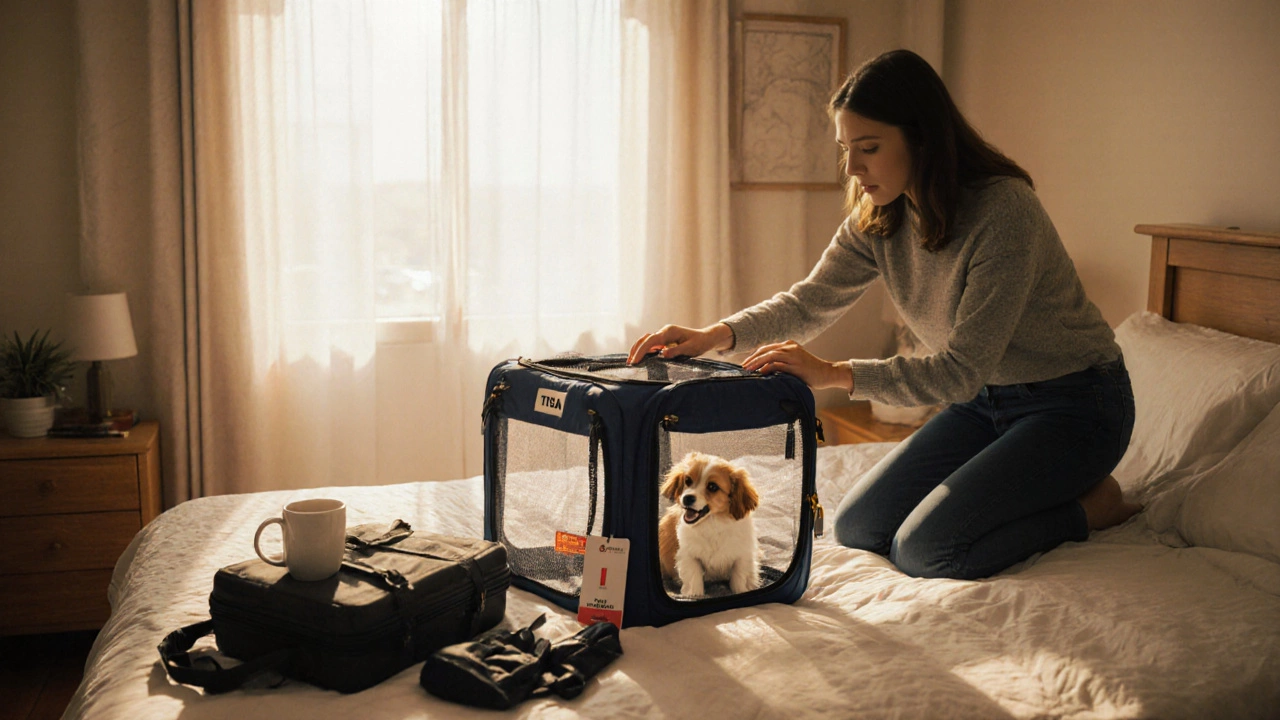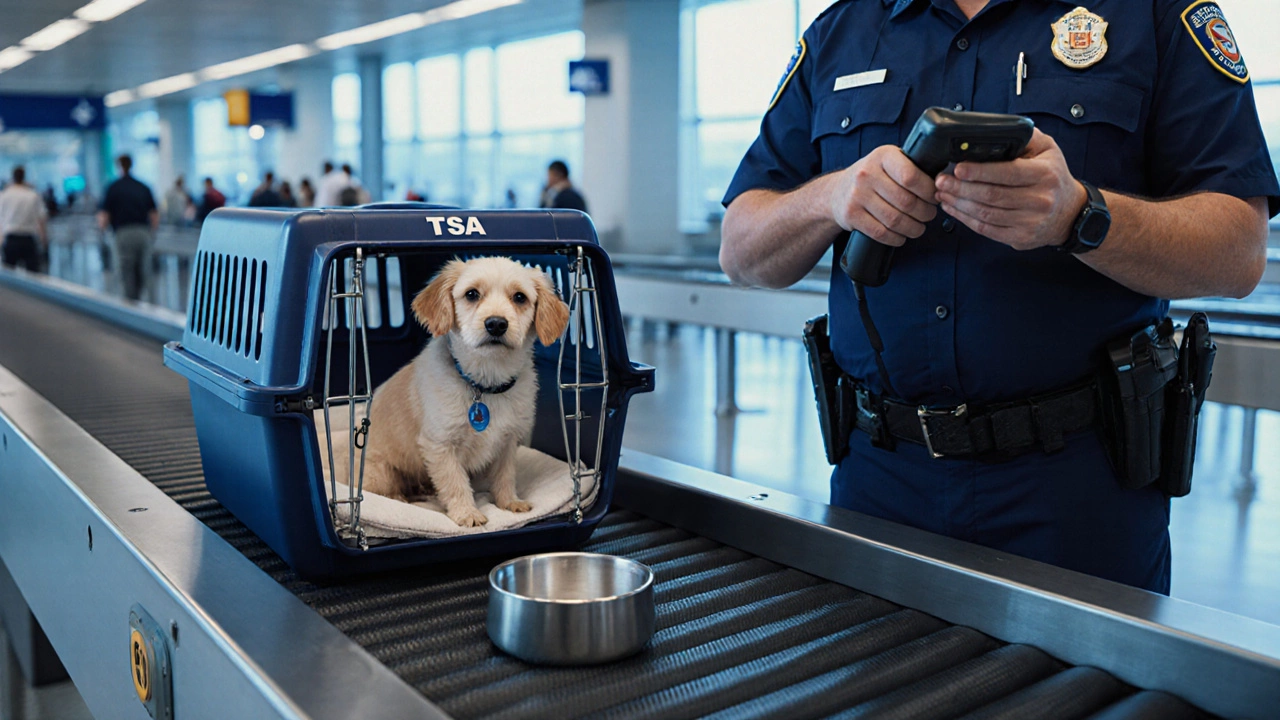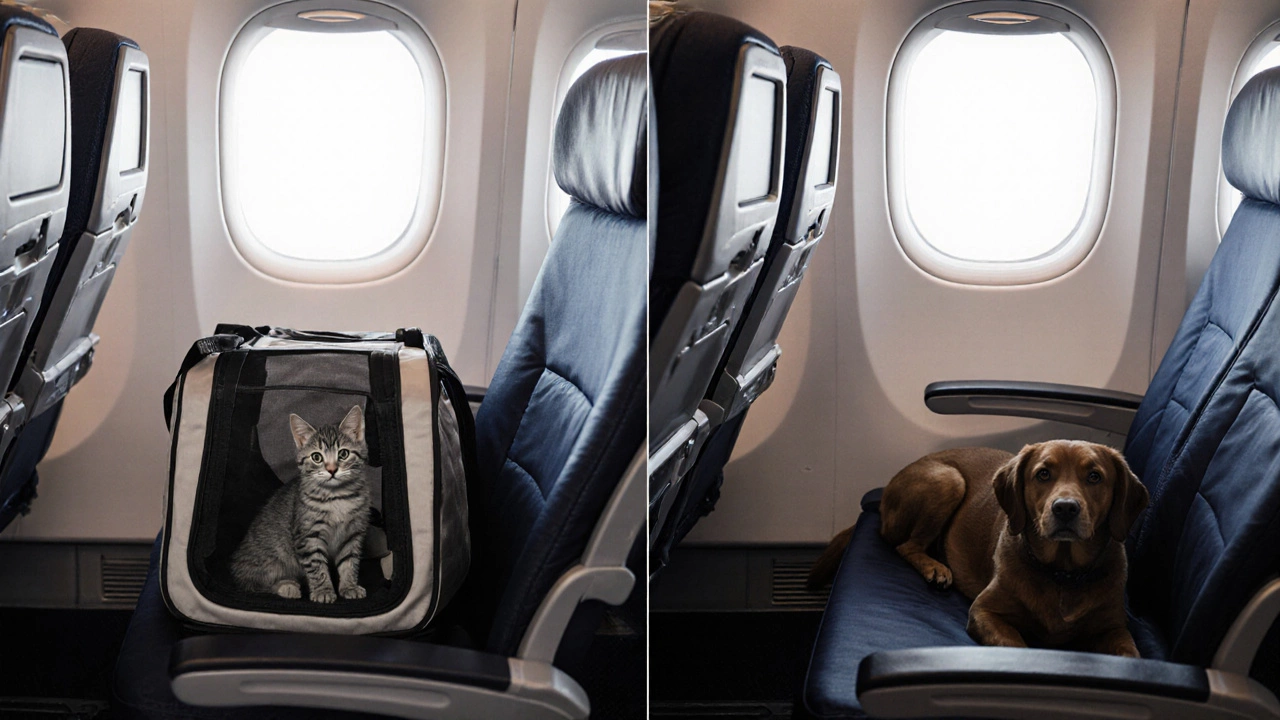
TSA Pet Carrier Size Calculator
TSA-approved carriers must fit under your seat (typically 18" L × 14" W × 10" H). Enter your pet's dimensions to check compliance.
When you’re packing for a flight with your furry friend, the biggest question is often: TSA approved pet carrier. Without the right carrier, you risk delays, extra fees, or even being turned away at the gate. This guide breaks down exactly what a TSA‑approved pet carrier is, why it matters, and how to pick one that sails through security without a hitch.
What Exactly Is a TSA‑Approved Pet Carrier?
Transportation Security Administration (TSA) is the U.S. agency that screens passengers and baggage at airports defines a TSA‑approved pet carrier as a container that meets specific size, material, and fastening criteria so that security officers can quickly inspect it without harming the animal. In practice, this means the carrier must be sturdy enough to stay closed during x‑ray scanning, have a clear lid or window for visual checks, and be made of materials that do not set off alarms.
Why You Need a TSA‑Approved Carrier
Airports are high‑traffic zones where security teams juggle thousands of bags every hour. If your carrier doesn’t comply, you’ll face one of three outcomes: a manual inspection that can stress your pet, a requirement to repack the animal into a compliant carrier (often at extra cost), or a denial of boarding. Moreover, many airlines echo TSA standards in their own pet‑travel policies, so a carrier that passes TSA checks is usually airline‑approved as well.
How to Spot a TSA‑Approved Carrier
Look for these tell‑tale signs on the product:
- Label or badge stating "TSA‑Approved" or "TSA Compliant".
- Dimensions that fall within the typical under‑seat space: 18"L×14"W×10"H (or as specified by your airline).
- Hard‑bottom or reinforced frame that won’t collapse under x‑ray pressure.
- Secure, lockable zippers or metal snaps that can be opened quickly by an officer.
- Ventilation openings covered by mesh that prevents debris from entering.
Manufacturers that follow International Air Transport Association (IATA) guidelines often meet TSA requirements as well, so checking the IATA logo can be a helpful shortcut.
Step‑by‑Step: Getting Your Carrier Ready for Security
- Inspect the carrier for any loose parts. Tighten zippers, snaps, and Velcro.
- Place a clear label on the outside with your pet’s name, breed, and a contact number.
- Load the carrier with your pet, a water bowl, and a small absorbent pad. Make sure the pet can sit, stand, and turn around comfortably.
- At the security checkpoint, place the carrier on the conveyor belt as you would a regular bag. Keep the lid open for the officer to glance inside.
- If asked, demonstrate that the carrier can be opened without damaging the interior. This is where a sturdy lock and reliable zipper pay off.
Following these steps typically results in a smooth scan and minimal wait time.

Choosing Between Soft‑Sided and Hard‑Sided Carriers
| Feature | Soft‑Sided | Hard‑Sided |
|---|---|---|
| Weight | Light, easy to fit in overhead bins | Heavier, more robust |
| Ventilation | Mesh panels provide ample airflow | Ventilation via slits or mesh windows |
| Durability | Susceptible to punctures | Resistant to impact and compression |
| Cost | Typically lower price range | Higher upfront cost |
| Compliance Ease | Must ensure reinforced seams for TSA scans | Naturally meets TSA structural standards |
Both types can be TSA‑approved if they meet the criteria, but hard‑sided carriers usually pass inspections on the first go because they retain shape under pressure.
Additional Travel Regulations to Keep in Mind
Beyond TSA, other bodies influence pet travel:
- Federal Aviation Administration (FAA) requires airlines to keep pets in containers that fit under the seat and do not obstruct emergency exits.
- Many airlines mandate a health certificate issued within 10 days of travel.
- International trips may need a pet passport, rabies vaccination records, and customs clearance forms.
Check your airline’s Airline the company operating your flight pet policy well before you book.
Pro Tips for a Stress‑Free Journey
- Acclimate your pet to the carrier weeks ahead - place treats and bedding inside.
- Use a collapsible water bowl that fits inside the carrier without taking up space.
- Label the carrier with a QR code linking to a digital copy of your pet’s health documents.
- Arrive at the airport at least two hours early for domestic flights; three hours for international ones.
- Carry a spare leash and a small bag of waste bags for any emergencies.

Common Mistakes to Avoid
Even seasoned travelers slip up. Here are pitfalls that can turn a smooth trip into a nightmare:
- Choosing a carrier that’s too large for the under‑seat space - the airline will refuse it.
- Using carrier fabrics that squeak or rustle, triggering extra scans.
- Relying on a carrier with a flimsy latch; TSA may need to cut it open.
- Skipping the pre‑flight health check - a missing certificate can ground you.
- Neglecting to empty the carrier of loose items that could shift during turbulence.
Frequently Asked Questions
Frequently Asked Questions
Do I need a TSA‑approved carrier for a flight that allows pets in the cabin?
Yes. Even if the airline permits pets in the cabin, security still screens all bags. A TSA‑approved carrier ensures the pet can stay inside while the bag passes through the scanner.
Can I use a regular backpack as a pet carrier?
Only if the backpack meets TSA size and material standards and has a secure, lockable opening. Most backpacks fail the durability test, so it’s safer to choose a product marketed as a pet carrier.
What size should my carrier be for a small dog?
A carrier that allows the dog to stand, turn around, and lie down comfortably - typically around 17"L×13"W×9"H for breeds under 10lb. Always verify the airline’s exact dimensions.
Do I need to take my pet out of the carrier at the TSA checkpoint?
Usually not. TSA officers can perform a visual inspection through the carrier’s window. If they need a closer look, they’ll request you open the carrier on the spot.
Is a TSA‑approved carrier also accepted on international flights?
Often, yes, but you must also meet the destination country’s import requirements, which may include additional paperwork or specific carrier certifications.
Can I use a carrier with wheels?
Wheel‑equipped carriers can be TSA‑approved if the wheel mechanism folds flat and does not interfere with the X‑ray. Check the product description for TSA compliance.
What documentation should I keep in the carrier?
A printed copy of the pet’s health certificate, vaccination records, and a contact sheet with your phone number and emergency vet information.
With the right carrier and a bit of prep, you’ll breeze through security and enjoy a calm flight with your pet. Remember: the carrier is the bridge between your pet’s comfort and the airport’s security demands - choose wisely, label clearly, and travel happy.


